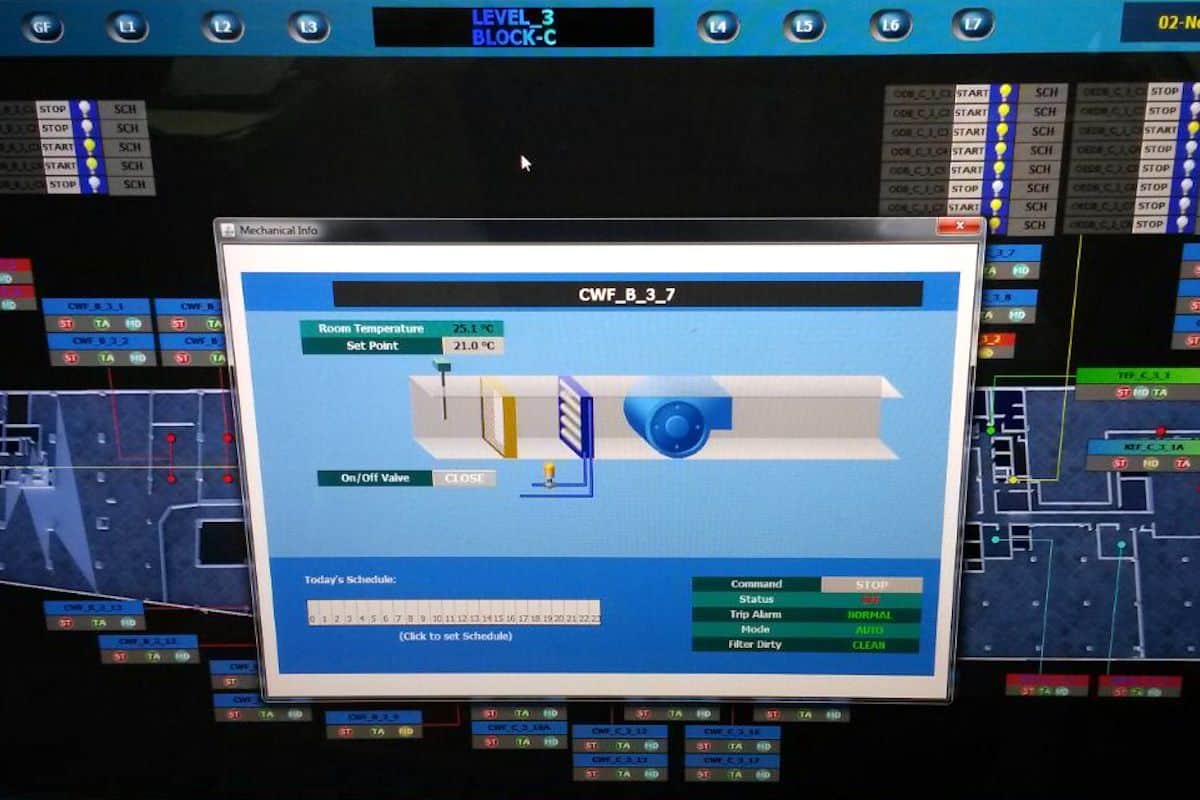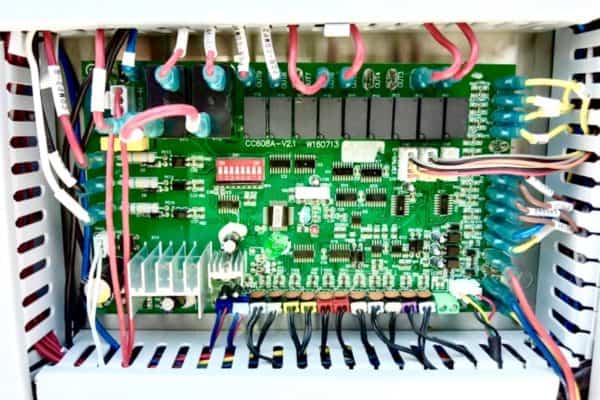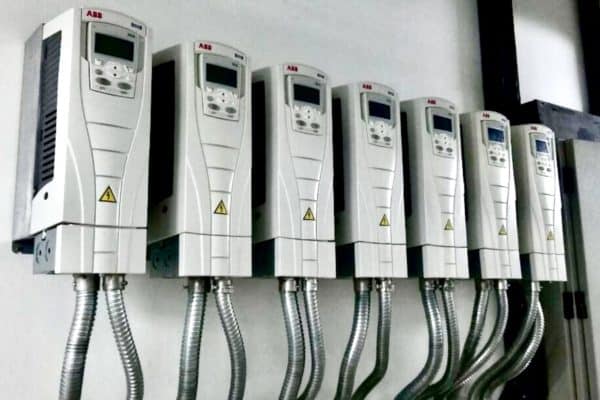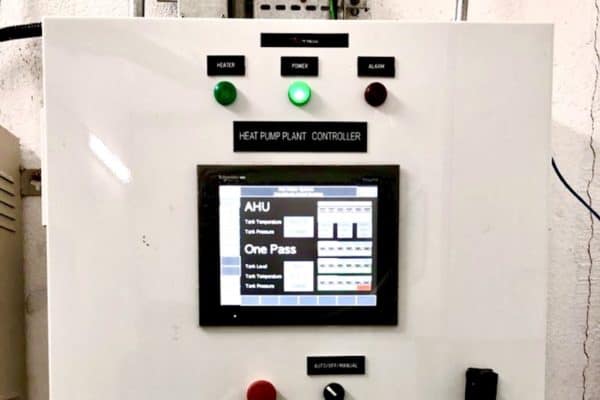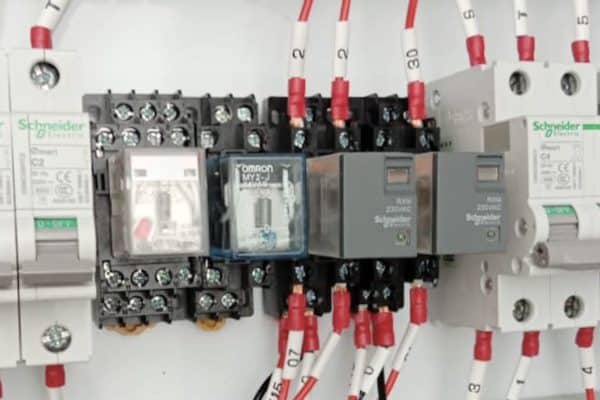HVAC BMS Integration: Basics, Components and Controls
BMS integration is becoming an essential part of HVAC. Many air conditioners, ventilation fans, sensors and controllers are remotely monitored and controlled by BMS. So, what exactly is the integration between HVAC and BMS?
HVAC integrates with BMS to allow building operators to monitor and control the HVAC system from a distance. In addition, operators can anticipate service intervals and potential breakdowns. The best thing about HVAC BMS integration is that it provides the opportunity for energy optimization.
The integration between HVAC and BMS is more than just providing conveniences. By centralizing the HVAC system, there are a lot of optimizations can be done.
What is BMS?
To understand the integration between HVAC and BMS, we need to know what is BMS. First of all, BMS stands for building management system. Sometimes, it can be used interchangeably with BAS or building automation system.
BMS can be found in large commercial buildings but not so much in residential buildings. Commercial buildings like shopping malls, office towers and hotels have very high operating costs (electricity cost) and the major contributor is the HVAC system.
HVAC systems, particularly heating and air conditioning, naturally consume a lot of power. Hence, in order to prevent the system from consuming more power than it is supposed to, regular service and maintenance work must be carried out to maintain the efficiency of the system.
However, HVAC systems are often not serviced and maintained well because people usually don’t pay much attention if the systems are still working or sometimes, workers are just lazy.
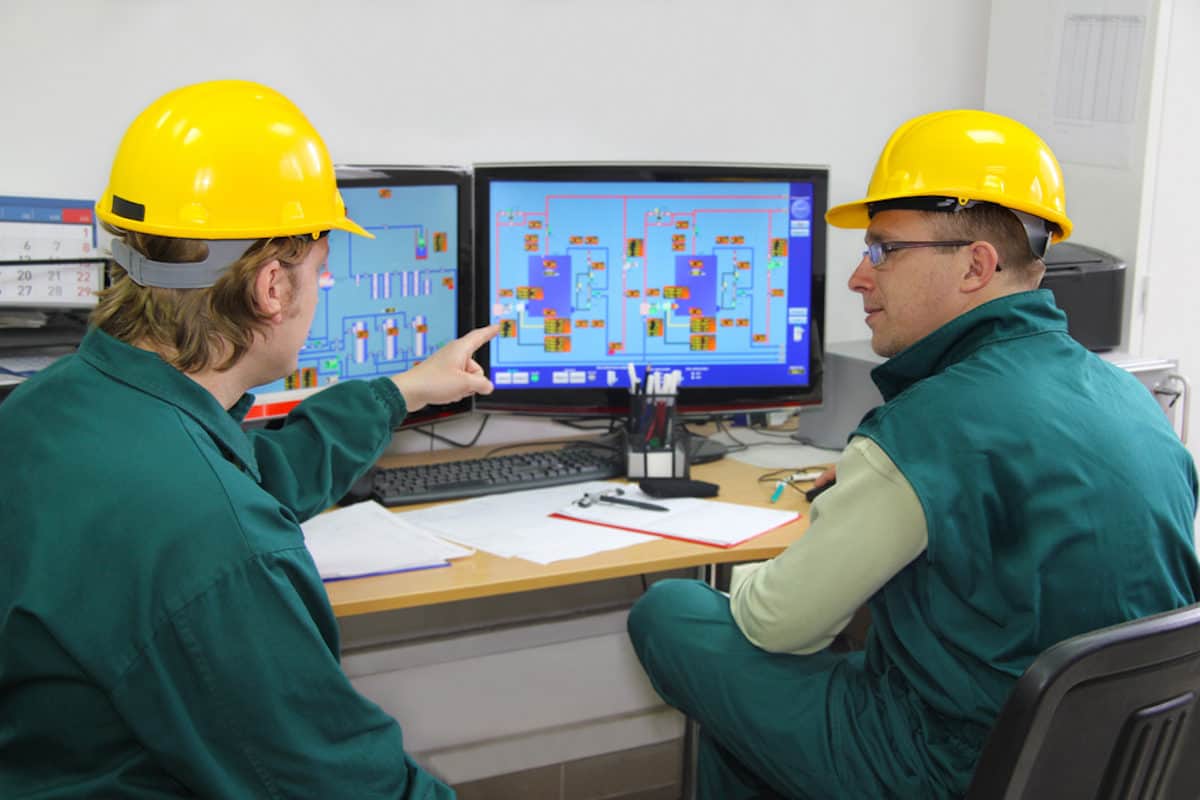
Before buildings have BMS, operators have to physically check each and every HVAC equipment such as chillers, cooling towers, air handling units, chilled water pumps, water treatment system, temperature sensors, differential pressure sensors and basement car park ventilation fans.
Relevant post: What are Differential Pressure Sensors in HVAC?.
The list go on and on and you can see why it is understandable that without a centralized monitoring system, many things can be missed out and thus, the efficiency of the HVAC system can deteriorate rapidly.
Nowadays, new buildings are mostly equipped with BMS. It connects various HVAC components to collect the necessary data and displays it graphically in the building’s control room.
Previously, BMS was not user-friendly. Today, BMS can show charts, graphs, trend lines and even animations. Still, the graphics are no way near to iPhones and laptops, just to be clear.
In the meantime, I would like to inform you that you can learn quicker by getting my HVAC Begin (eBook) if you’re a beginner. But, if you have a year or two of experience, then I would suggest you consider my HVAC Basics (eBook). Nonetheless, I encourage you enroll in my HVAC Beginner Course: 10 Days to Become Competent in HVAC if you want to equipped yourself with a complete set of basic HVAC skills.
HVAC Beginner Course
Learn the most basics and foundational HVAC skills including cooling capacity calculation, equipment selection, duct sizing, pipe sizing, exhaust fan sizing, controls, electrical and more.
What HVAC Components Integrate with BMS?
Many HVAC components integrate with BMS. Some of them are meant for monitoring only while some allow the BMS to override and control remotely.
Chillers
Whether it is water-cooled chillers, air-cooled chillers or hybrid chillers, they are always integrated with BMS. Often, the BMS can schedule the operation of the chillers as well as record the efficiency and power consumption of the chillers.
Air Handling Units
Air handling units (AHUs), as well as fan coil units (FCUs), are also connected to BMS. However, BMS usually doesn’t control the operation of AHUs and FCUs rather, it leaves the control to local thermostats. Still, the BMS always records the energy usage pattern.
Cooling Towers
Cooling towers are also integrated with BMS. Operators can monitor the start and stop of cooling towers and compare it to the operation of chillers. Besides, they can check local climates such as dry bulb and wet bulb temperatures.
Chilled Water Pumps
Chilled water pumps and condenser water pumps are connected to BMS as part of the chiller plant room control. Together, the BMS can plot the efficiency of the chiller plant and show trend lines, whether it is upward or downward trajectory.
Actuators
Actuators for control valves such as pressure-independent balancing control valves (PIBCVs) and modulating valves as well as dampers such as motorized fire dampers and modulating dampers are also connected to BMS to provide position and status feedback signals.
Relevant post: 4 Types of Actuators in HVAC (Damper & Valve).
Ventilation Fans
Ventilation fans include smoke extraction fans, pressurization fans and exhaust/fresh air fans for mechanical rooms are integrated with BMS. However, toilet exhaust fans are usually not connected to BMS because the impact is not significant.
The above HVAC components are some of the common ones and there are still many other HVAC components that integrate with BMS. As the industry progresses, there will be more HVAC components to be integrated with BMS.
How HVAC Integrates with BMS?
When it comes to the integration between HVAC and BMS, many people have a hard time understanding how they communicate, including me in the past.
HVAC units usually communicate with BMS via the BACnet protocol. BACnet stands for building automation and control network. It is a communication protocol developed by organizations such as ASHRAE, ANSI and ISO in an effort for standardization.
On the other hand, many HVAC units also communicate with BMS via the Modbus protocol.
In building construction, BACnet is generally easier to work with and Modbus requires some manual data entry works to get it going. Nevertheless, a “protocol converter” can be used to translate Modbus to BACnet.
For BACnet communications, you only need to connect a CAT5 cable to the HVAC display controller like a PLC controller. Such communication is known as high level interface.
Relevant post: What is PLC in HVAC? (CPU, Module, HMI, Analog & Digital).
As for Modbus communications, you often need a pair of 1.5mm2 PVC cables for each signal. For example, you need a pair of 1.5mm2 PVC cables for on/off status, trip alarm and control command.
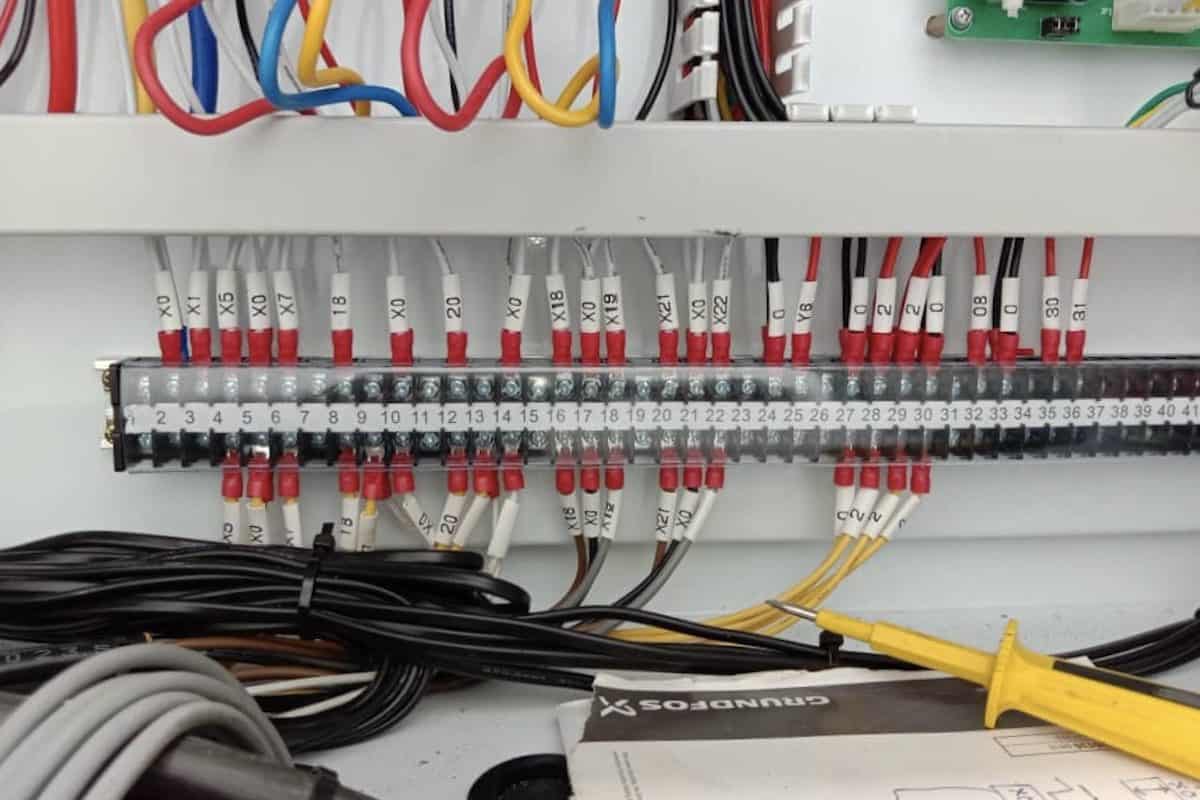
Hence, with Modbus, you’ll have a lot of more cables to deal with. Whereas, with BACnet, you only need one CAT5 cable for each HVAC system. However, Modbus connections can be taken directly from control panels and the HVAC unit itself while a separate PLC controller is needed for BACnet connections.
Chillers, BTU meters, flow meters, digital power meters are some of the HVAC components available for BACnet communications I can think of. Others like fans, AHUs and FCUs are using Modbus.
HVAC Equipment Data Collected by BMS
When HVAC integrates with BMS, there are a few categories of data collected and sent to BMS for monitoring and control purposes.
On/Off Status
On/off status is a basic requirement from BMS. Air conditioners and fans that cycle on and off the need to provide a feedback signal to tell the BMS whether they are running or on standby. Often, the BMS will display such a signal in graphics with green color and grey color representing run and standby respectively.
Trip Alarm
Trip alarm is also one of the basic requirements from BMS. Whenever there is a problem with the air conditioners or fans, a trip alarm signal must be triggered and sent to the BMS to indicate a faulty. Usually, it is displayed in red color graphics on the BMS. Sometimes, the BMS may demand to read the error codes of air conditioners.
Temperature Data
In HVAC, there are many temperature data available from various equipment and components such as the temperature sensor inside the air conditioner itself or the temperature sensor installed externally on chilled water pipes or the temperature reading from local thermostats.
These temperature readings are important for the control of the HVAC system as well as for the BMS. Sometimes, BMS may use its own temperature sensors as signals to override the control of the HVAC system when necessary.
Operating Hour
Operating hour is the duration during which an air conditioner or fan has been running. For instance, an air conditioner has been running for 2400 hours in total. Hence, the operating hour is 2400.
BMS record and use the operating hour to control the operating sequence of air conditioners and ventilation fans to ensure that all of them have an equal and balanced load. So, it prevents one of the units from working too much and having an exceptionally high operating hour.
Pressure Data
Some air conditioners are equipped with a differential pressure sensor to detect the pressure drop across their filter thereby indicating a filter service. By capturing that pressure data, operators can see the filter status of all air conditioners with ease from the control room.
Again, the above are some of the common data collected by BMS I can think of. I’m sure that the HVAC system is feeding a lot more data to the BMS system.
Furthermore, BMS can perform calculations internally, within the system, to produce results that are not directly taken from the HVAC system. For example, with the temperature data from two different temperature sensors and a flow rate, the BMS can calculate the energy usage or BTU, replacing the need for a BTU meter.
Conclusion
The integration between HVAC and BMS is important for the sustainability of high-performing HVAC systems. Without BMS, the maintenance of HVAC systems is inefficient and often compromised.
As an HVAC engineer, you don’t have to know all the details of the HVAC BMS integration but a few important aspects to work more efficiently such as the protocol used, the signal required by BMS and the calculations that can be done to produce data without a direct physical connection.
For details on the control of the HVAC system itself, see my post 5 Types of HVAC Controls (Thermostat, 0-10V, DDC & Dry Contact).
Lastly, consider my HVAC Begin (eBook) if you’re a beginner and you want to have a foundational knowledge in HVAC. But, if you have a year or two of experience, then I would suggest you consider my HVAC Basics (eBook). Nonetheless, I encourage you enroll in my HVAC Beginner Course: 10 Days to Become Competent in HVAC if you want to equipped yourself with a complete set of basic HVAC skills.
HVAC Beginner Course
Learn the most basics and foundational HVAC skills including cooling capacity calculation, equipment selection, duct sizing, pipe sizing, exhaust fan sizing, controls, electrical and more.
If you have anything to add (or ask) about this topic, leave a comment down below!


